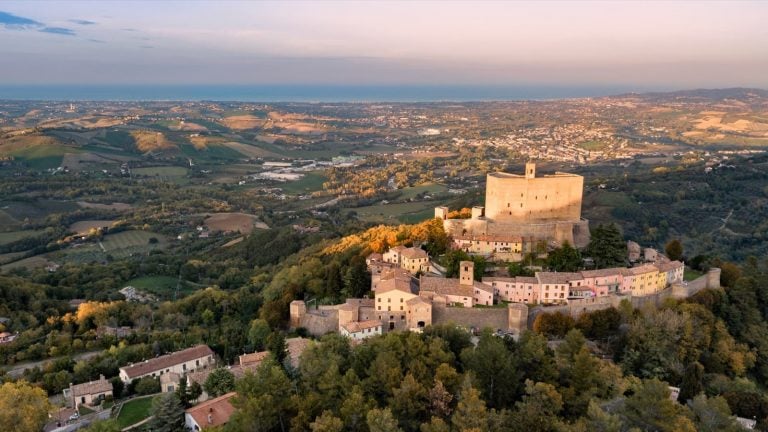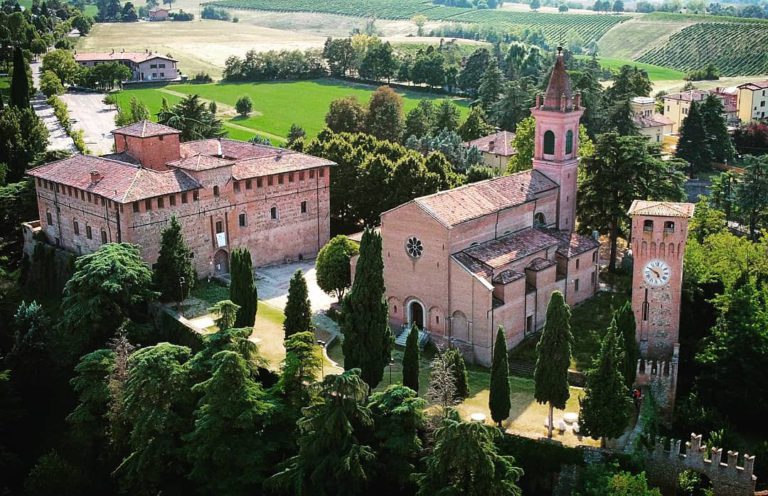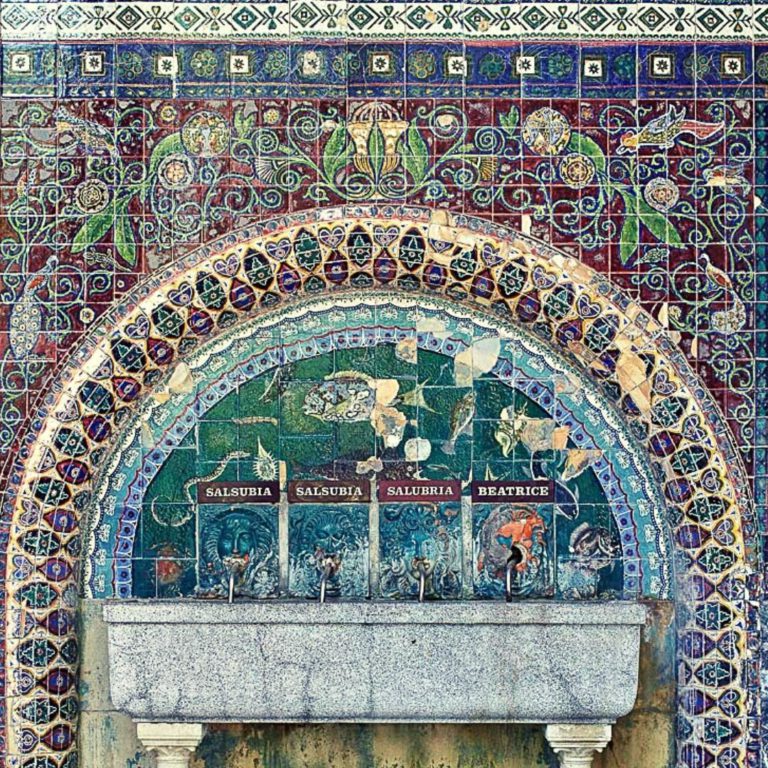What about a Castle + Spa combo for your next weekends in the Emilia-Romagna region?
Emilia-Romagna’s castles bear witness to the noble families that lived, held sway, and expanded their lordship in this region over the years.
Here is a list of 5 castles in Emilia with thermal spas within 30 km. If you feel like a lady or a knight of a bygone era, here are some ideas for a cultural break combined with some well-deserved relaxation.
Castles and Spas Near Parma
SAN VITALE FORTRESS IN FONTANELLATO
The first defence tower of the Fortress of Fontanellato was built by order of the Pallavicino family in 1124 and it also included a drawbridge.
Today the Castle, which passed through the hands of the Visconti family and then the Sanvitale family in 1386, is the centre of the town and is surrounded by a moat full of water – as it once was – even though the bridge is now made of stone. It was an important noble residence until 1948, when count Giovanni Sanvitale sold it to the Municipality.
We recommend visiting the living quarters of the Sanvitale family (still intact), the only Camera Obscura still working in Italy, and the fresco of Diana and Actaeon painted by Parmigianino in 1524. This masterpiece of the Italian Mannerism can be enjoyed also beyond the regular opening hours of the castle, by booking a private visit.
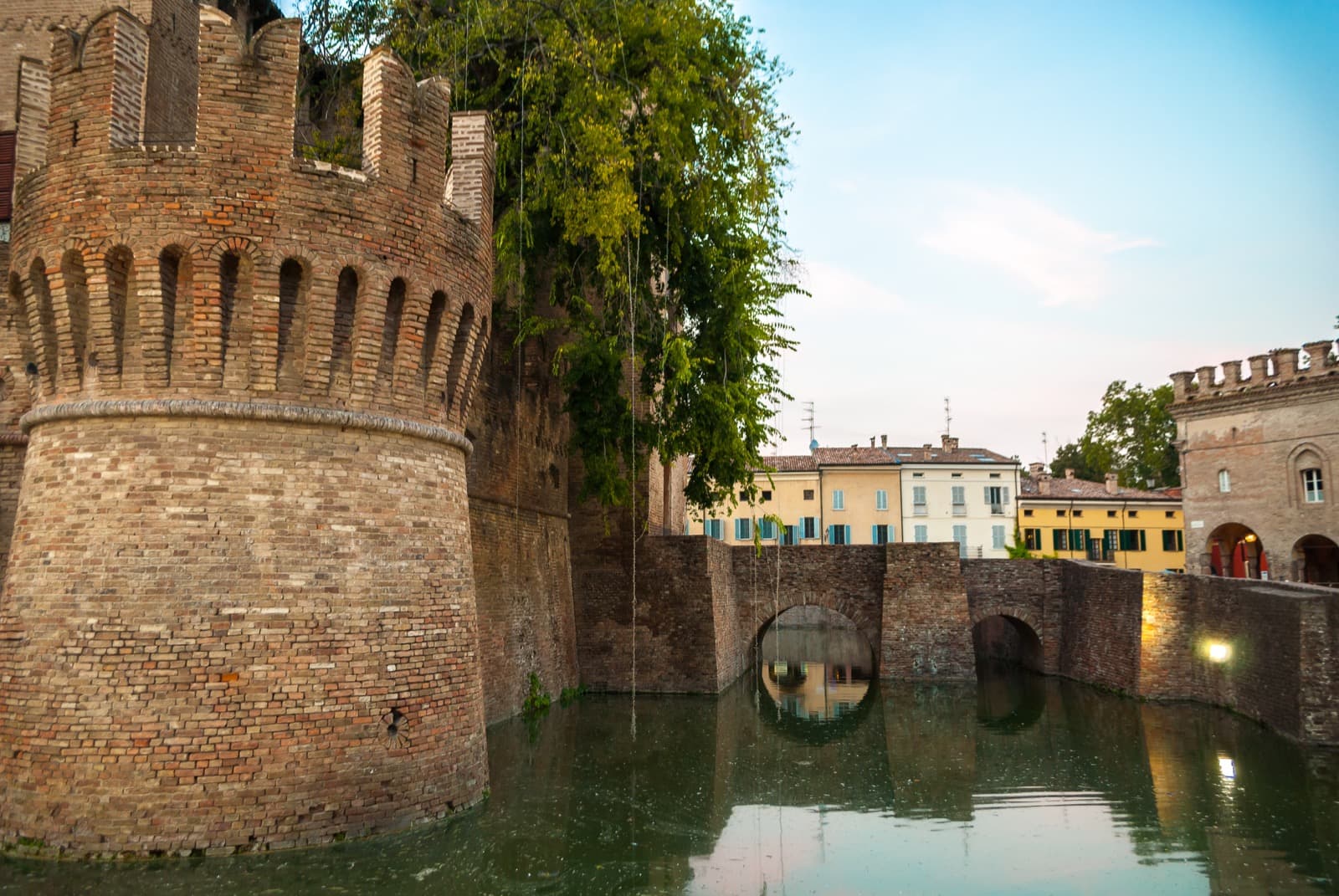
CASTLE OF NOCETO
Better known as “La Rocca” (“The Fortress”), the Castle of Noceto was rebuilt (after being destroyed several times) during the 14th century by counts Sanvitale and then in the middle of the 15th century by Pier Maria Rossi, who gave it its current form.
For centuries, the rulers of Noceto – the Sanvitale family – used it as the administrative centre of the town. This is why it includes a courthouse, a dungeon, the podestà’s residence and the militia’s.
The walls with four circular towers are still visible today and the quadrilateral fortified keep offers a breathtaking view of the town. You can also visit a beautiful garden in a typical late Gothic style.
More than 10 years ago the fortress became also known as the “Castle of Music”, as it houses the B. Slawitz Museum of Old Records, the collection of the Liuteria Parmense, and the International School of Violin-making of master Renato Scrollavezza.
If you choose to visit Parma’s castles, be sure not to miss four thermal spas within short distance:
- Salsomaggiore Terme: at the Terme Zoja spa, you can enjoy thermal treatments, baths and mud baths with salsobromoiodic waters that are among the richest in salts found in nature.
- Monticelli Terme: to restore balance between body and soul, all you need is a stop at the Terme di Monticelli spa.
- Tabiano Terme: you can plan your period of otium at the Terme di Tabiano, also known as the Terme del Respiro (spa of breath).
- S. Andrea in Medesano: to get away from the hustle and bustle of the noble courts, simply take refuge in the greenery, among the meadows, woods and fruit-growing areas surrounding the Terme di Sant’Andrea.
Castles and Spas Near Reggio Emilia
CASTLE OF BIANELLO
The Castle of Bianello is the only one still standing of the four towers that once stood on four hills, giving rise to the name of the municipality in which they were located, Quattro Castella.
When in 1044 Beatrice of Lorraine bought six courts including Bibbianello, there was already a castrum. This castle is strongly linked to Matilda of Tuscany, so much so that it is said to have been her favourite one.
Inside, you can visit several rooms on the main floor, which is accessed via a majestic neo-baroque staircase and still preserves frescoes of the seventeenth and eighteenth centuries; the small chapel dedicated to St. John the Baptist, which was constructed in the tower; and the dungeon where you may see graffiti carved into the walls by those who have been held prisoner there over the centuries. Fun fact: the pomegranate flower held by the
Countess in a painting is actually the symbol of her reign and wisdom.
If you decide to visit the castle in spring, make sure you don’t miss the Corteo Storico Matildico, a historical parade of people in colourful costumes re-enacting the proclamation of the Countess as Vice-Queen of Italy and Imperial Vicar.
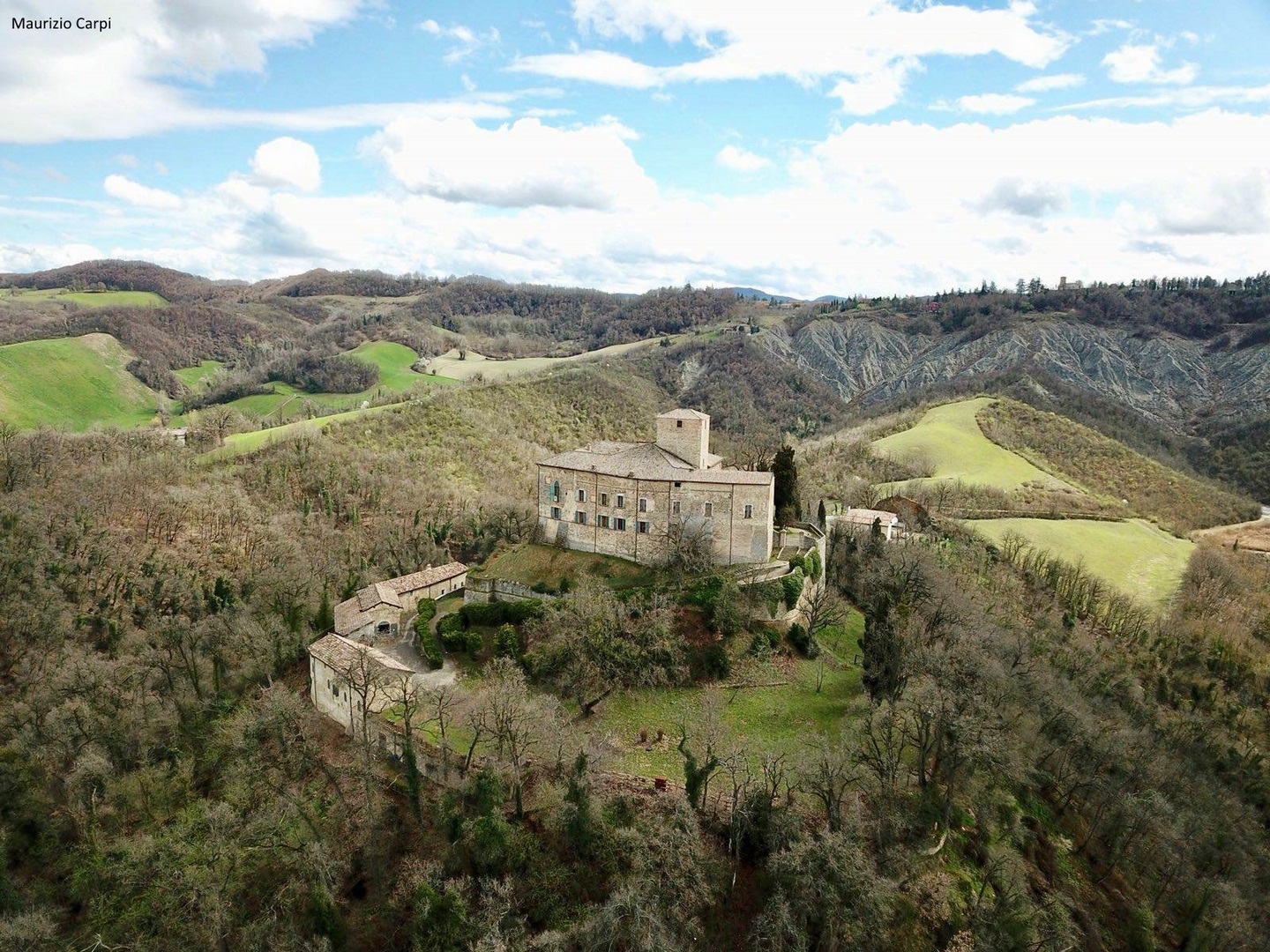
CASTLE OF ROSSENA
Unlike many other castles that were then transformed into stately homes, the Castle of Rossena was built around 950 and still preserves its original military structure, designed to defend the castle of Canossa.
This castle, built atop a reddish volcanic hill (from which it takes its name), belonged to the Canossa family until the 11th century, when it passed to the Da Correggio family first and later to Marie Louise, Duchess of Parma.
Arriving on foot, you will be greeted by its majestic walls. Inside, after passing through the heavy castle door, among machicolations and portcullises, you can visit all the three floors with frescoes dating back to the second half of 1700. Be sure to visit the large “Piazza d’Armi”, from which you can enjoy a stunning view of most of the properties of Matilda’s kingdom.
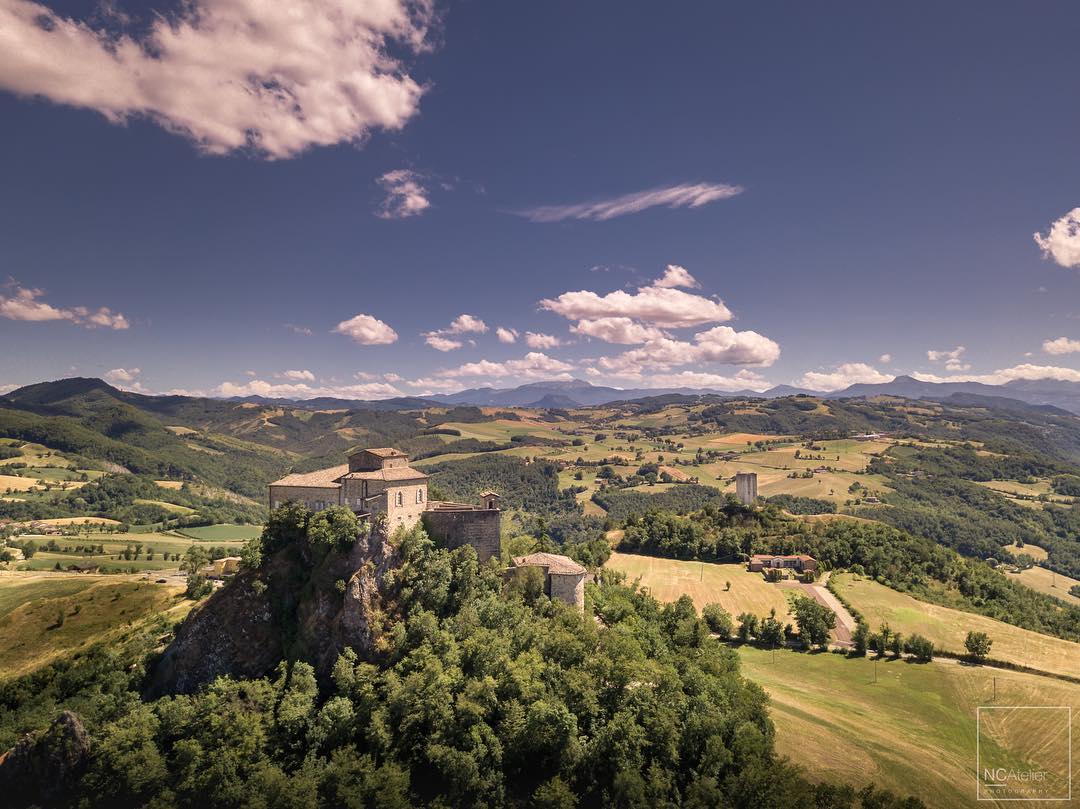
CASTLE OF CANOSSA
Built in the middle of the 10th century by Adalberto Atto, the Castle of Canossa immediately became a defensive, noble and cultural centre also thanks to the presence of the church of Sant’Apollonio and the nearby Benedictine convent. Today, unfortunately, only the ruins remain, mostly dating back to the late Middle Ages and subsequent centuries.
This place is known for the meeting that took place in 1077 between Emperor Henry IV and Pope Gregory VII, in which Matilda of Tuscany played a fundamental role (hence the expression going to Canossa).
After Matilda’s reign, the castle passed through many hands, from the Da Correggio family to the Visconti and the Farnese families, then to the House of Este, who named poet Ludovico Ariosto castellan, and eventually to the Rondinelli Counts.
If you need a break after learning everything there is to know about Matilda’s reign, just cross the Enza river, which is the border between the provinces of Reggio Emilia and Parma, to reach the spa at Terme di Monticelli, a stone’s throw from the three castles of Reggio Emilia.
The Castles and Spas section is based on the list of castles mapped by the IBC – Emilia Romagna Cultural Heritage Institute.
Author

Elisa Mazzini
Social Media Manager for @inEmiliaRomagna and full-time mom.
You may also like
Castles and Thermal Spas in Romagna
by Elisa Mazzini /// December 18, 2024
Castles and Thermal Spas near Bologna & Modena
by Elisa Mazzini /// October 12, 2020
Historical Spas in Emilia-Romagna
by Elisa Mazzini /// February 17, 2020

Interested in our newsletter?
Every first of the month, an email (in Italian) with selected contents and upcoming events.
